‘My Aloe juvenna lives happily in a pot I found on the street’
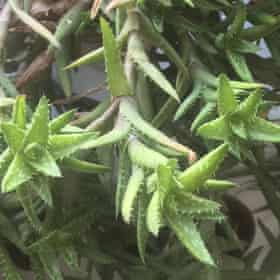
I picked up my Aloe juvenna from Ikea as a 3cm stub wrapped in plastic 10 years ago. It was one of my first houseplants and survived several moves from Manchester to Peckham to Putney to a narrowboat, and is now living happily on my bathroom windowsill in a pot I found on the street. It has grown into a beautiful, trailing succulent and has survived variable watering and chunks breaking off during the house moves – nothing seems to bother it. I’m currently propagating some broken pieces in the hope of passing it on. Ellie Edmonds, student, Surrey
Jane Perrone says: The only real way of killing the tiger tooth aloe, Aloe juvenna, is swamping the roots with water, especially in winter. The wonderful thing about many succulents including Aloe is how easy it is to root new plants from cuttings, and it is always wise to have a few new plants coming along as a security in case the mother plant goes south.
‘This Flaming Katy was described as “Welcoming a bit of neglect”’
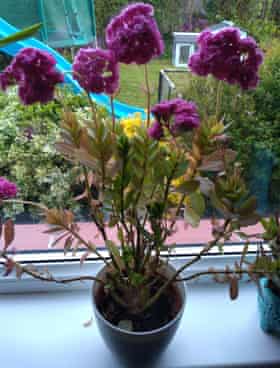
This is my Flaming Katy. It was originally bought in January 2020 using a wellness voucher from my employer, given to remote workers. I chose it because it was described as “welcoming a bit of neglect” and, with my gardening skills, this was essential. Despite everything, it thrived and had very pretty pink flowers. One thing I didn’t realise was that it is poisonous to cats. We have three. The front of the plant snapped off when my cat landed on it and took half of the plant out; I assume it was a pre-emptive strike of some sort. Since then, it has grown more of the pretty pink flowers than ever! Flaming Katy 1, cat 0. Rich Bennett, commercial director, Swansea
JP: It’s a good job this plant has an easy common name, as every grower I have met has a different way of pronouncing the botanical name: Kalanchoe blossfeldiana. Most people chuck them away once they have flowered but it is possible to keep them going for years. Many houseplants are poisonous to cats and dogs so it is worth doing your research if you have pets that nibble leaves.
‘We truly think it is indestructible’
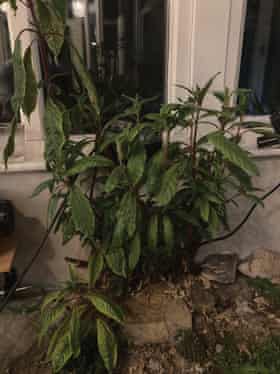
We moved into our current house in 2013. It was previously owned by the directors of a seed company and attached to the house was a conservatory and plant room. This plant is a survivor from that. We moved the other plants but this one’s roots were buried and tangled around the stones of an internal water feature. We chopped it back to tame it, but each year it springs back anew, and with seemingly unbridled vigour. It is, we believe, a Bolivian fuchsia. Certainly it bears pink flowers and dark red/purple fruits, which seem edible. For long periods it has gone unwatered, suffered sub-zero temperatures in winter and 45-degree heat in summer if we forget to open windows. We truly think it is indestructible and thrives, even, on harsh treatment. We have decided to co-exist but are somewhat fearful of it taking over. David Footitt, consultant neurologist, Cumbria
JP: The leaves certainly look correct for the Bolivian fuchsia, Fuchsia boliviana, but I wouldn’t want to give a firm identification without seeing the flowers. I suspect the plant has got its roots nicely ensconced in the rocky ground and is so well established that it will bounce back from any setbacks. Just hack it back at your convenience and enjoy, David.
‘Our Japanese anemone battles on in the shade’
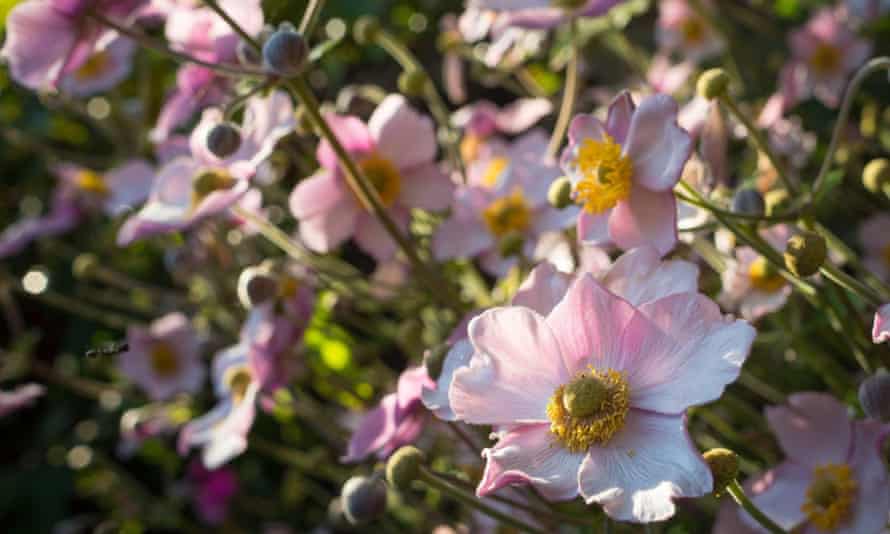
We bought this pale pink Japanese anemone about 20 years ago. It is very robust and has never suffered from any disease or pests. It has a profusion of cheery blooms on elegant tall stems, and a long summer flowering season. It also loves sun but will battle on in shade: ours grows directly beneath an established cherry tree. However, we have discovered it spreads quite aggressively via suckered shoots, and ours now also grows in a neighbour’s garden having found its way under the wall. Graham Jones, painter, Bedford
JP: Japanese anemones (Anemone × hybrida) have a reputation for being invasive, as Graham has found, particularly in sandy soils. It is one of those plants that you find at plant sales because people are trying to get rid of some of their anemones that have popped up in the wrong places. That said, they bloom in late summer and early autumn when the rest of the garden is starting to run out of steam.
‘My Sea campion has endured drought, ice, high winds and salt spray’
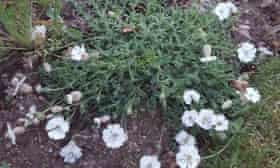
My durable plant is the Sea campion. It is a wild plant I introduced to my garden three years ago using seeds taken from the shores of Orkney, and it now flourishes in several flower beds, to my delight. It is a modest plant with white flowers that has a similar growing habit to aubretia and flowers in May or June. I am especially happy that I decided to grow this little plant, as it thrives so well in my free-draining, stony garden which has to endure drought, ice, high winds and salt spray. It seeds freely and is easy to grow. Perfect. Morag Bramwell, retired, Scotland
JP: This is the perfect example of the most important tenet of gardening: pick a plant that suits your garden’s conditions. Sea campion (Silene uniflora), as the name suggests, thrives in coastal gardens, but would be deeply unhappy in a heavy clay soil. This British native would also do well in a gravel garden.
‘I expect my Aspidistra to be with me well into my 70s’
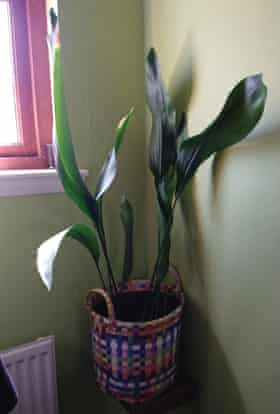
I have an Aspidistra houseplant I inherited as a seedling about 20 years ago. It lives in the corner of our downstairs loo, and receives low levels of light through the opaque window. It thrives on benign neglect, with an occasional dust and watering. I recently gave it some much-needed TLC and divided it into eight separate pots, which I have gifted to friends. The original parent plant is called George after Orwell’s Keep the Aspidistra Flying. I expect George to be with me well into my 70s, as they live up to 50 years. Natalie McCall, horticultural therapist, Scotland
JP: I have heard of Aspidistras that have been handed down through the generations as family heirlooms and are well over 100 years old. They were beloved of the Victorians as they could cope with the sooty, draughty air of their homes, but it does just as well in a dark corner of a modern house.
‘I soak my orchids in water, it seems to keep them going’
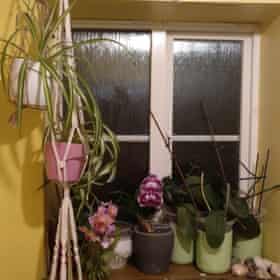
My orchids have lived happily on my windowsill for years. I work a lot and haven’t always had extra time to look after them. I soak them in water once in a while (when I remember) and this seems to keep them going. They love the bathroom moisture and non-direct light. I have many more flowers around the house but my orchids are the easiest to care for. Monika, nurse, Medway
JP: There is a good reason why Phalaenopsis (AKA moth orchids) sell by the million: they are well-suited to the steady warmth of modern homes. Monika has got the right idea, as they love moist air so do well in bathrooms and kitchens, and an occasional thorough soaking is better than daily dribbles of water.
‘I shoved a sweet potato in a pot and boom!’
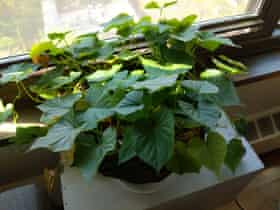
I found a sweet potato in the bottom of a drawer at the beginning of the first lockdown. It was clearly beyond eating, so I shoved it in a pot and boom! It took off and has shown no sign of slowing down since. Dale W, Chicago
JP: There are so many fun things you can grow from kitchen scraps, including the sweet potato (Ipomoea batatas). The tuber will sprout easily if fresh, and the resulting plants have attractive foliage. In fact, breeders have produced ornamental cultivars of this species, with attractively coloured leaves in lime green or purple.
‘These stargazer lilies come back every year, despite little attention from me’
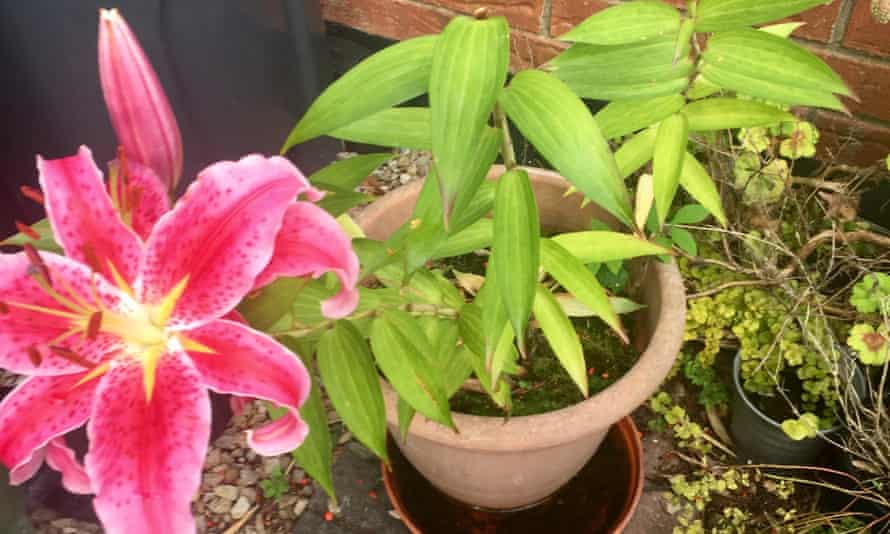
I can remember buying the bulbs for my pink stargazer lily plant: I was with my mum in a garden centre in 2004 when I saw them on sale. We both adore stargazer lilies and I thought it would be lovely to try and grow my own. I planted them then promptly forgot about them until the first summer when they grew tall and bloomed beautifully. I was so proud, I took a photo to show mum. Sadly my mum passed away in 2012 but those lilies keep blooming every single summer, and they always make me think of her. They come back year after year despite getting little or no attention from me. June Shannon, medical journalist, Dublin
JP: The wonderful thing about flowering bulbs is that they pop up every year to put on a show, but when they are not flowering you can just forget about them. They tend to get better and better as the bulbs increase in size.
‘I hope my Zamioculcas zamiifolia comes to my funeral’

I bought this Zamioculcas zamiifolia in 2014. Since then, it has outlasted three relationships and five jobs. I have gone entire lockdowns without watering it and I have never repotted it or changed its soil. It seems the more I neglect it, the more aggressively it thrives. I cannot relate. I am now scared to care for it properly in case the sudden shock kills it. Of the 34 plants I have crammed into my flat, this ZZ is by far the most low maintenance, the most hardy, and the most excellent. I hope it comes to my funeral. Louisa Austin, student, Surrey
JP: This is the plant I recommend for anyone who claims they can’t keep anything alive. There are accounts of people locking ZZ plants in a windowless cupboard for several months only to find the plant looks exactly the same at the end of its stint in darkness. It grows from fleshy rhizomes which can store water and nutrients when times are tough.
‘This Christmas cactus has been nicknamed the Survivor’

I moved into my house 24 years ago and was given this Christmas cactus. Many years later, it is still alive. My mother in law calls it “the survivor” and rushes to water it every time she’s here. It bursts into bright pink and white flowers despite our erratic care and inconsistent watering, and wholly deserves its nickname. Anne Grogan, charity manager, Ireland
JP: Keeping Christmas cactus (Schlumbergera) in a terracotta pot is a great idea, as the porous material allows plenty of air to reach the roots. This species is an epiphyte in nature – in other words it grows in trees – which means it is used to water draining away quickly from the roots, and likes an airy potting mix. The fleshy leaves (which botanists will tell you are actually modified stems called cladodes) can cope with periods of drought, so it’s perfect for the forgetful waterer.
‘Our money plant has flourished in all conditions’
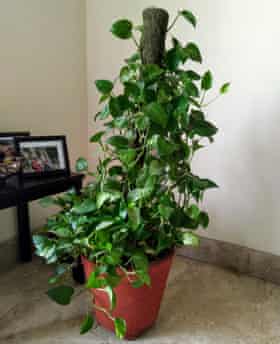
We have had this money plant since 2013 and it has flourished in all conditions: direct sunshine, shade, and now as an indoor plant. It has proven highly adaptable and low maintenance and is often the subject of conversation with visitors. The lush green leaves keep multiplying, and I have moved some of the vines into glass bottles to keep on window sills. The plant seems happy to wrap itself around the moss stick and enjoys all the attention it receives. The pot is a bit wobbly after all these years, but I would not risk changing it for now. Jacquiline Roberts Singh, researcher, India
JP: Several houseplants go under the common name of the money plant, but this particular species is Epipremnum aureum, also known as devil’s ivy. Few people realise that the heart-shaped leaves are just the juvenile form of the foliage: when mature, the leaves grow up to 75cm long and develop splits. There is a wonderful specimen in the glasshouse at RHS Garden Wisley.
The Link LonkMay 24, 2021 at 11:28PM
https://www.theguardian.com/lifeandstyle/2021/may/24/forget-green-fingers-readers-on-12-hardy-house-plants-for-terrible-gardeners
Forget green fingers! Readers on 12 hardy house plants for terrible gardeners - The Guardian
https://news.google.com/search?q=forget&hl=en-US&gl=US&ceid=US:en

No comments:
Post a Comment